ColorFolds
A Project by Jenny Sabin Lab
Cornell University
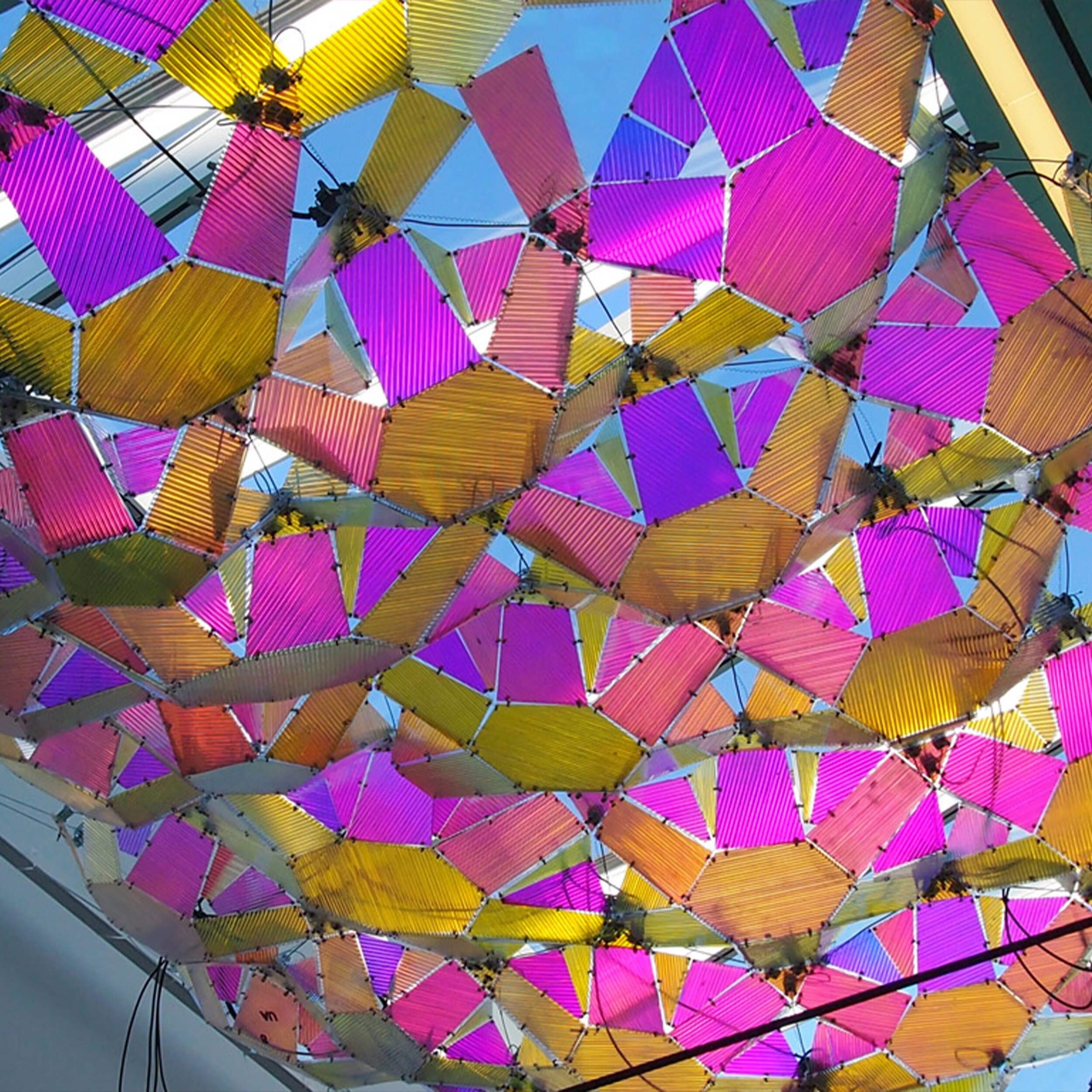
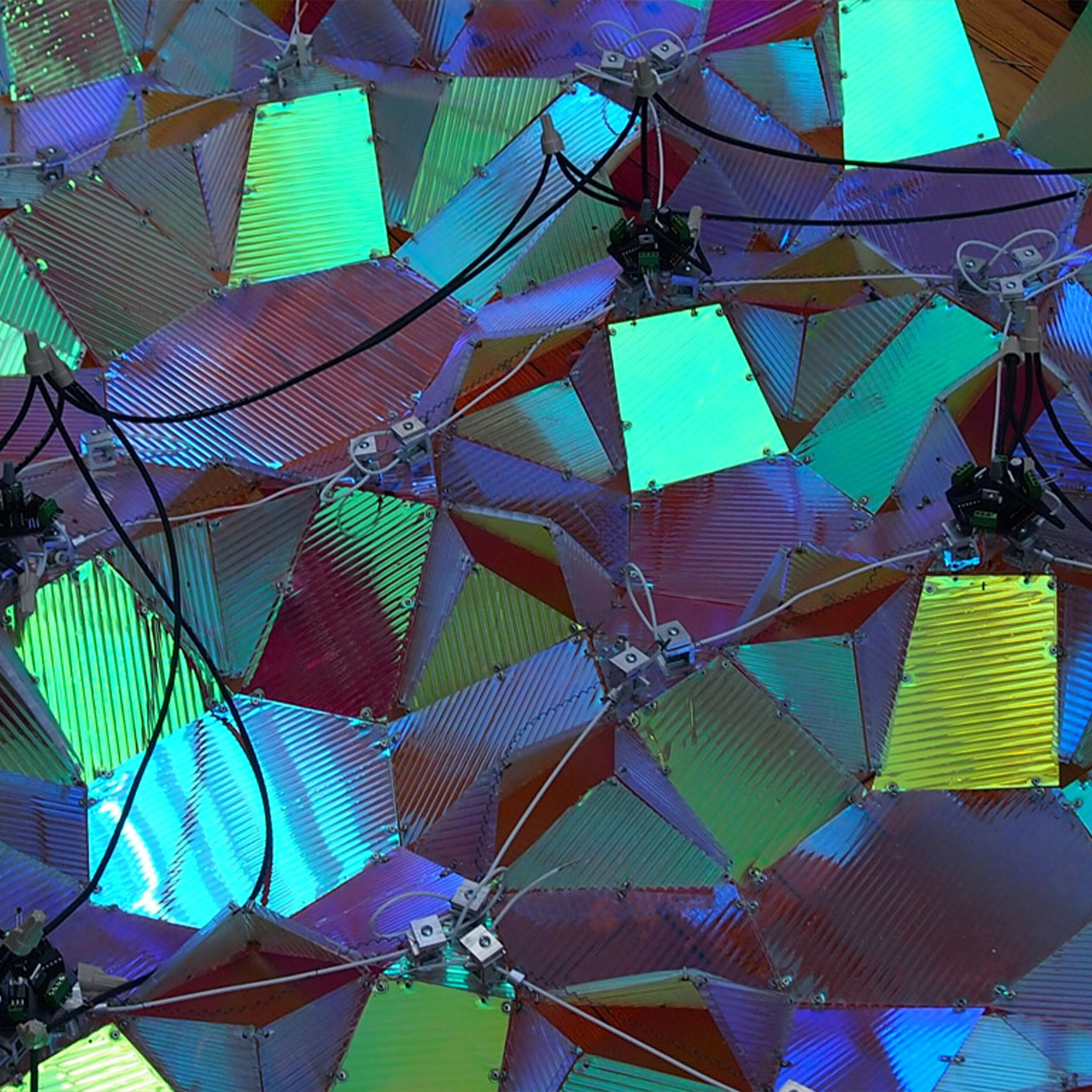
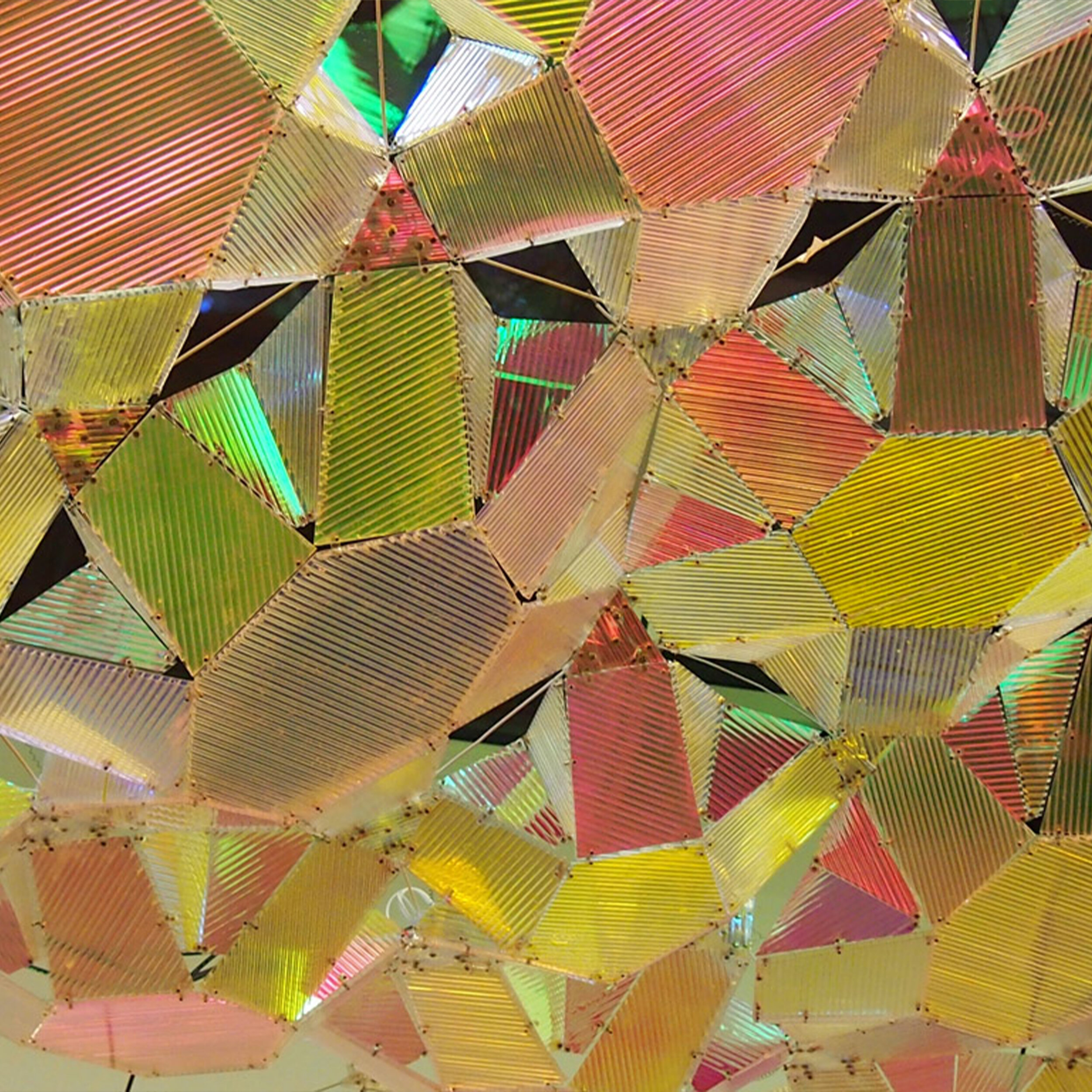
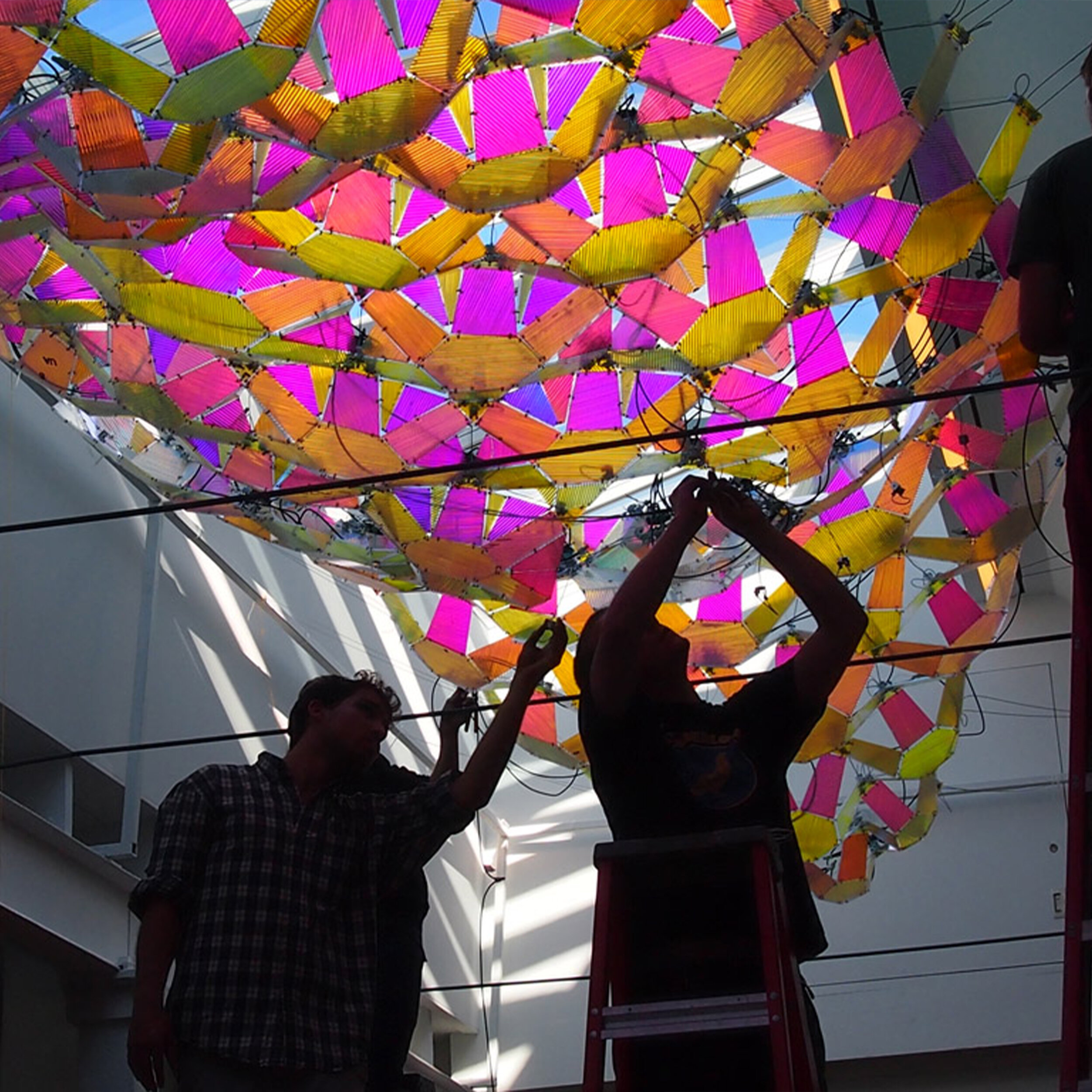
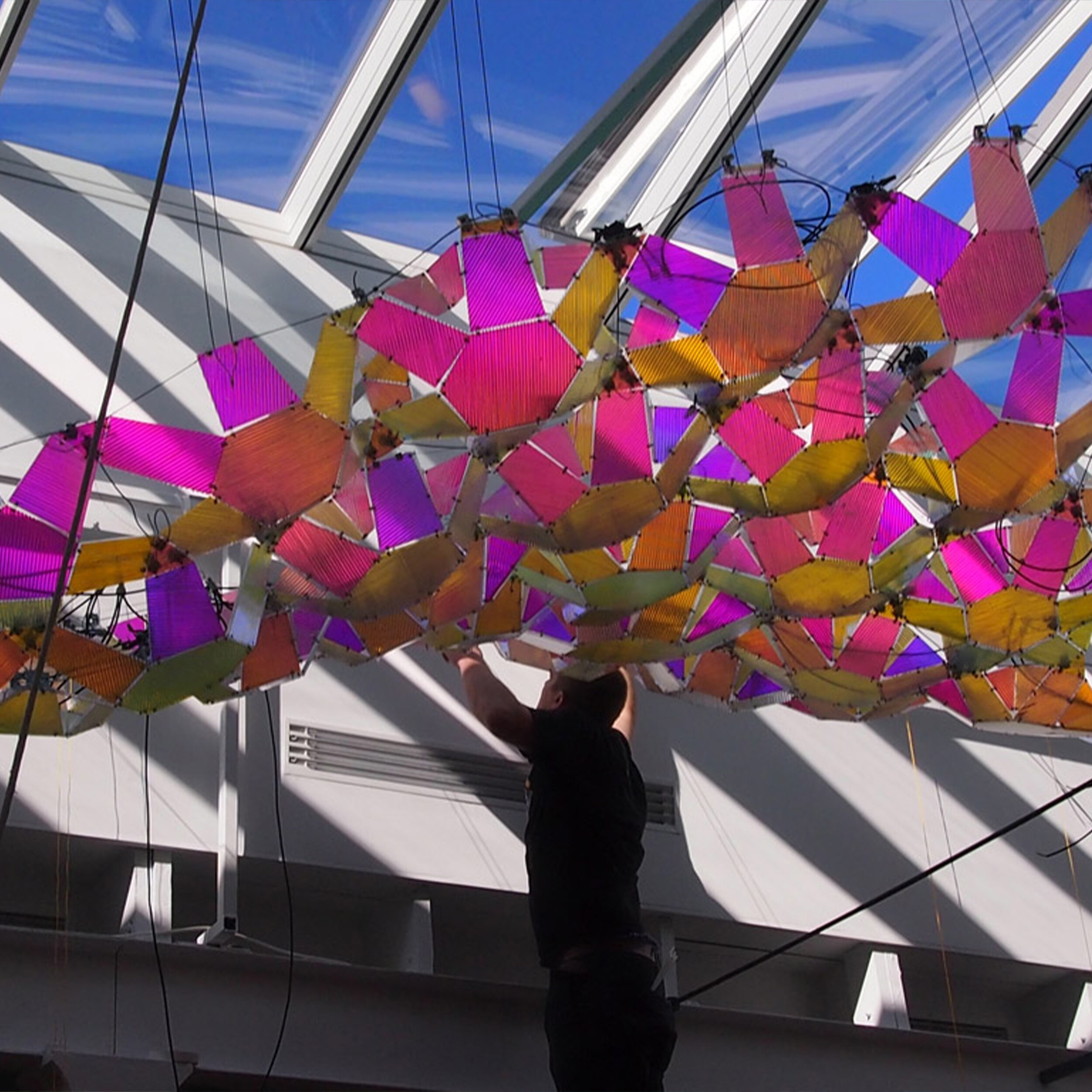
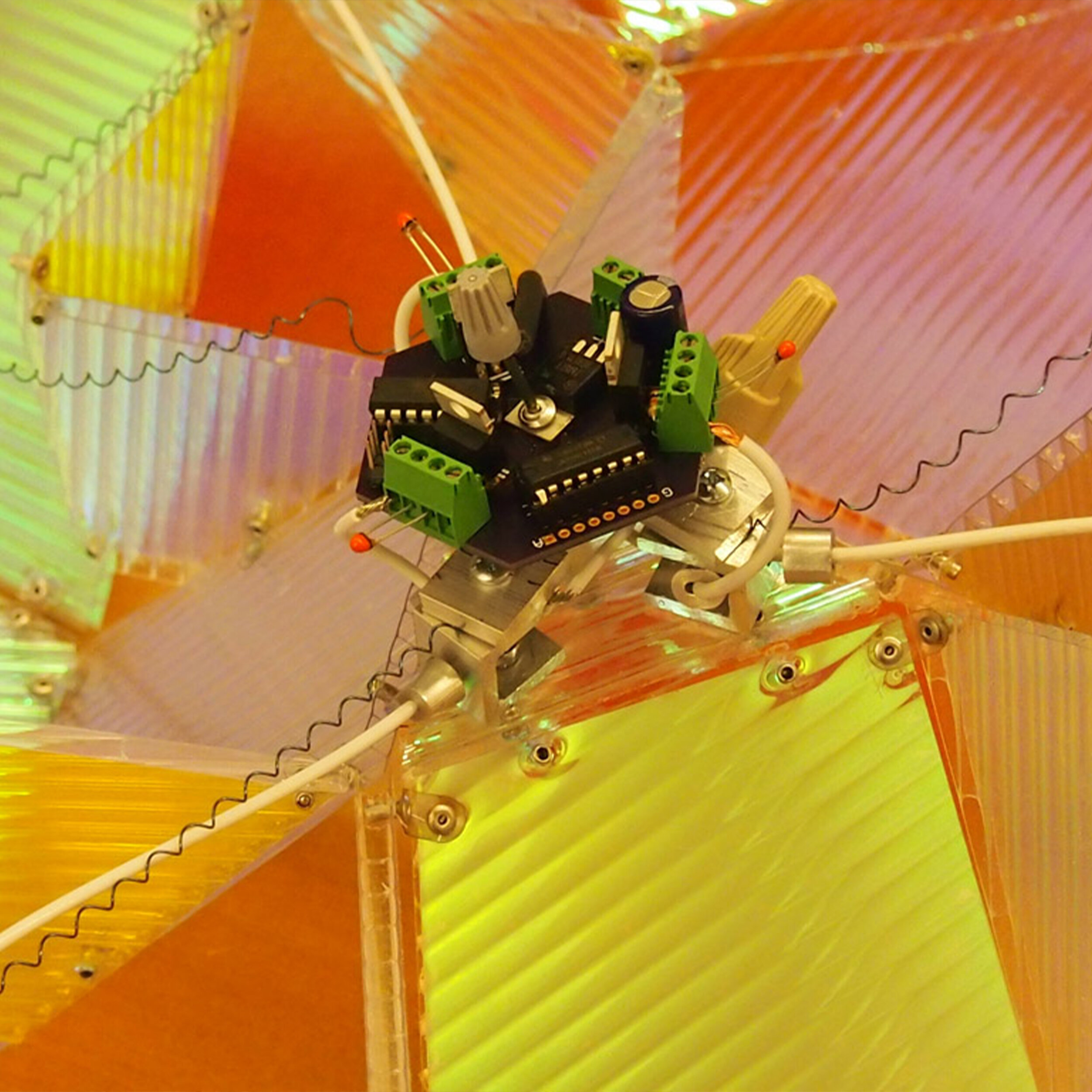
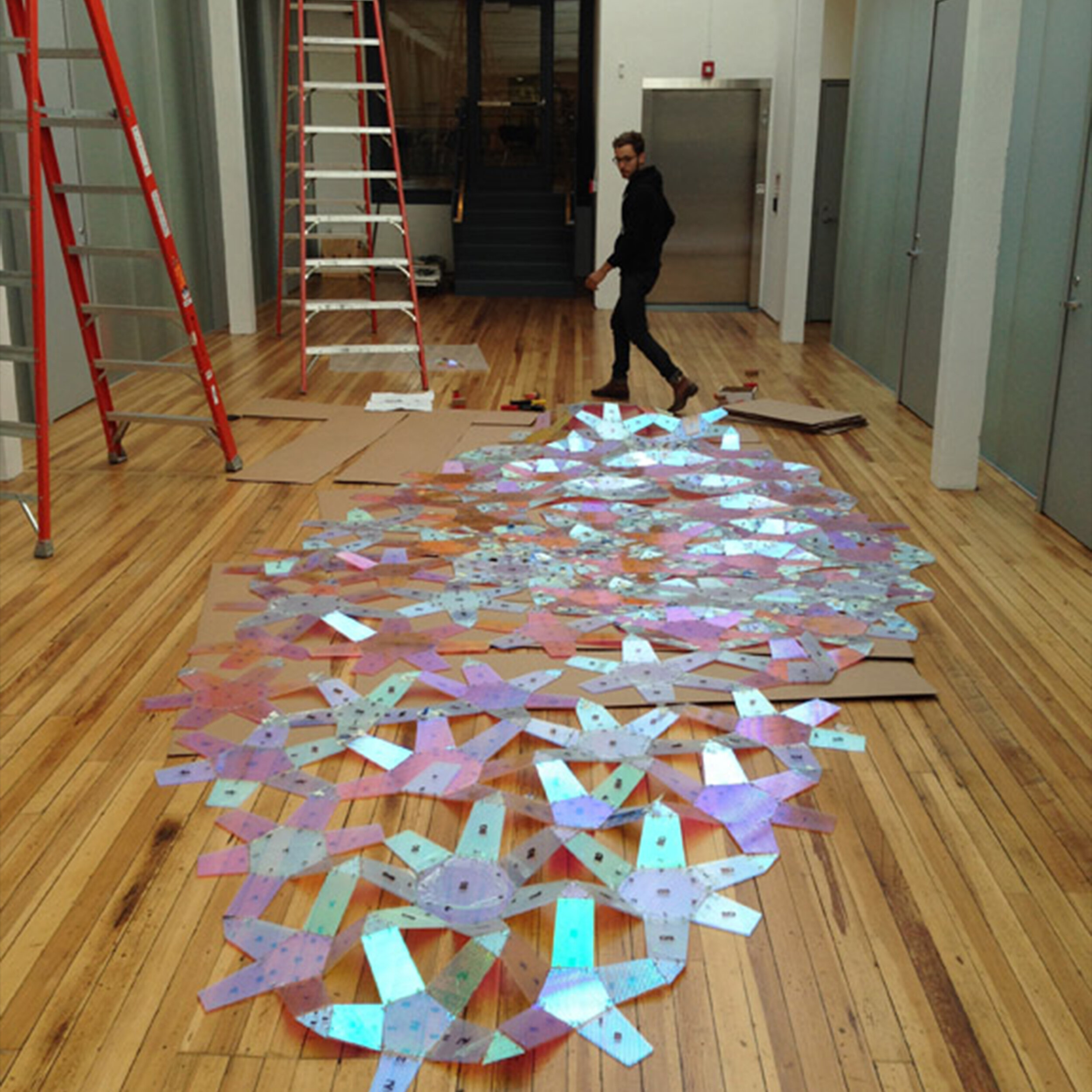
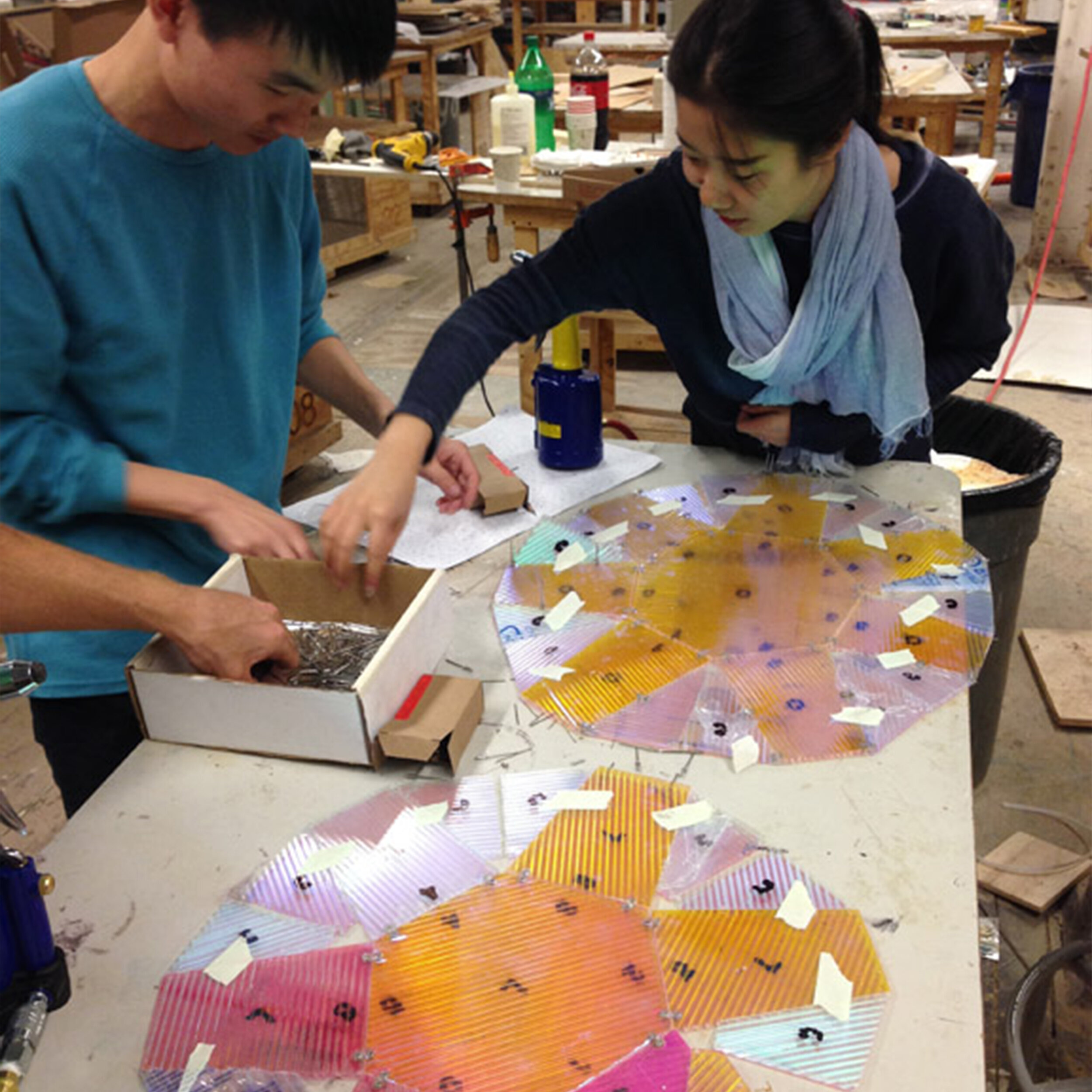
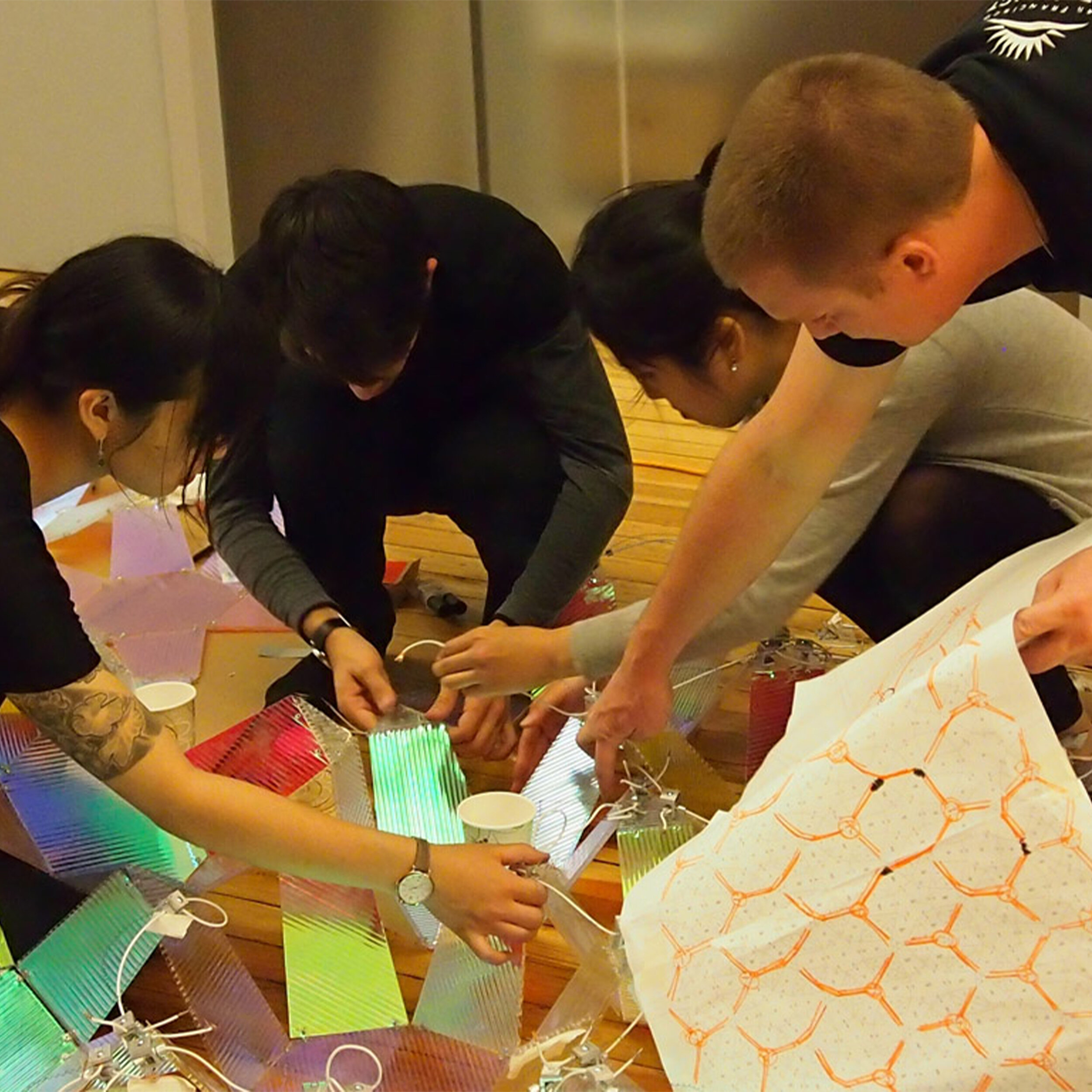
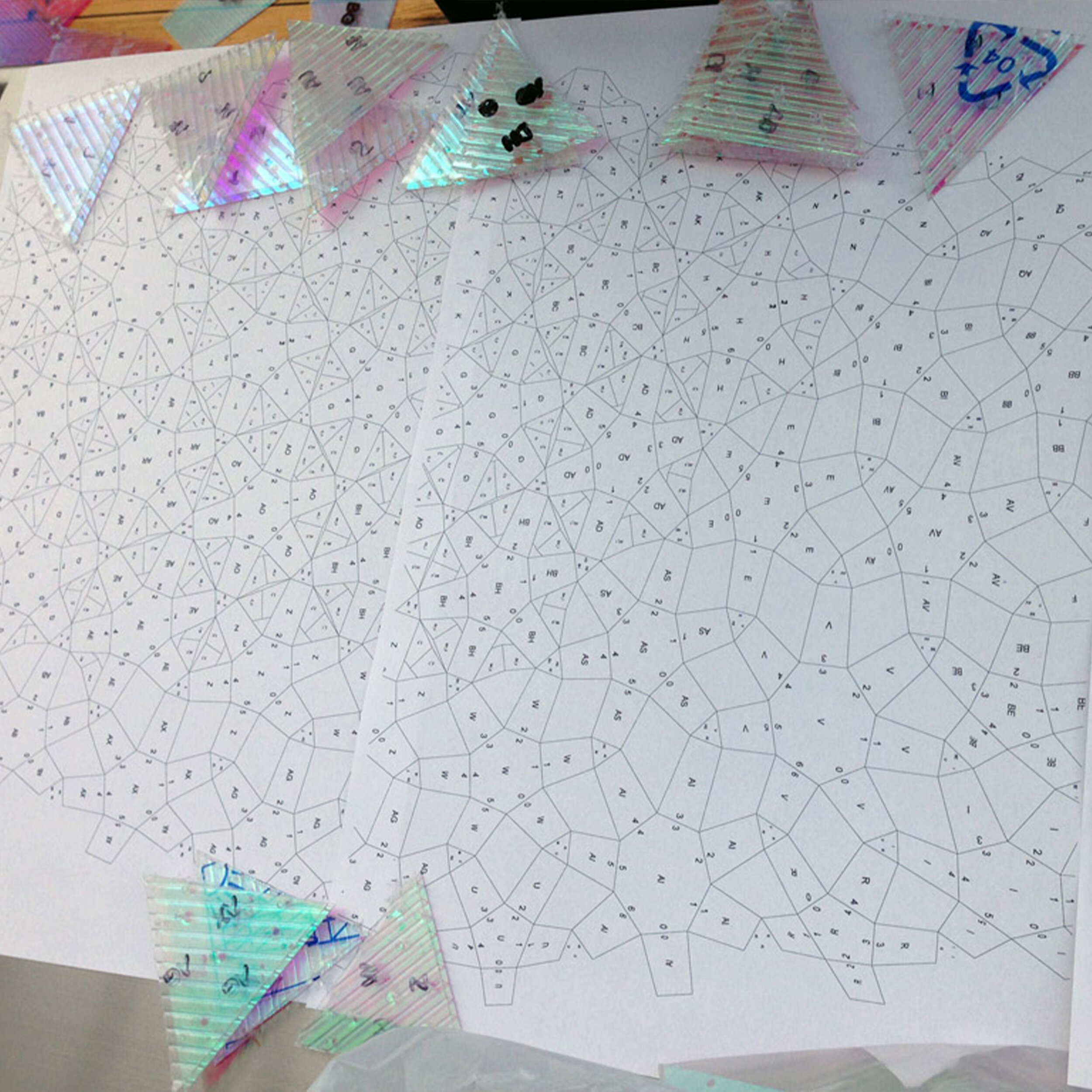

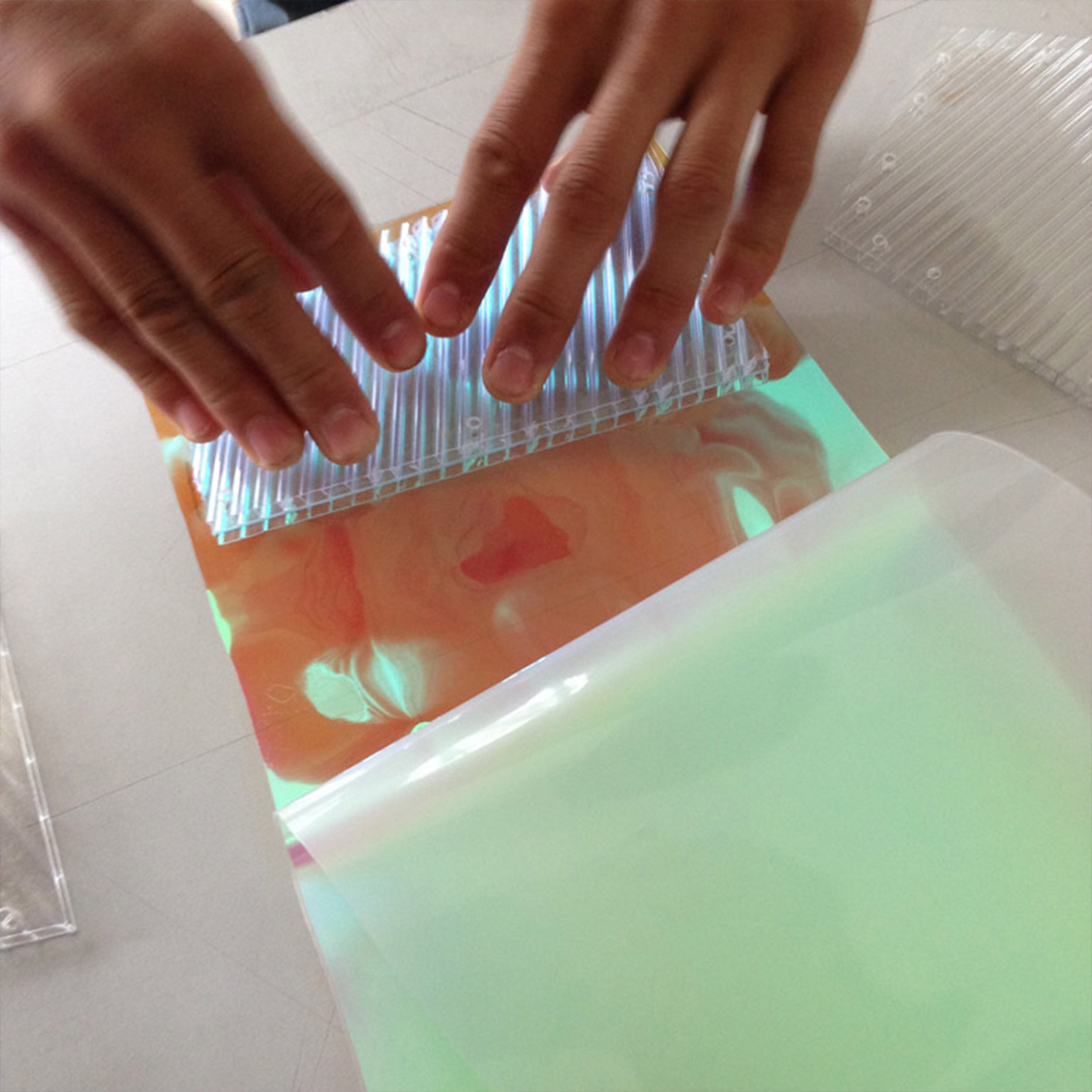
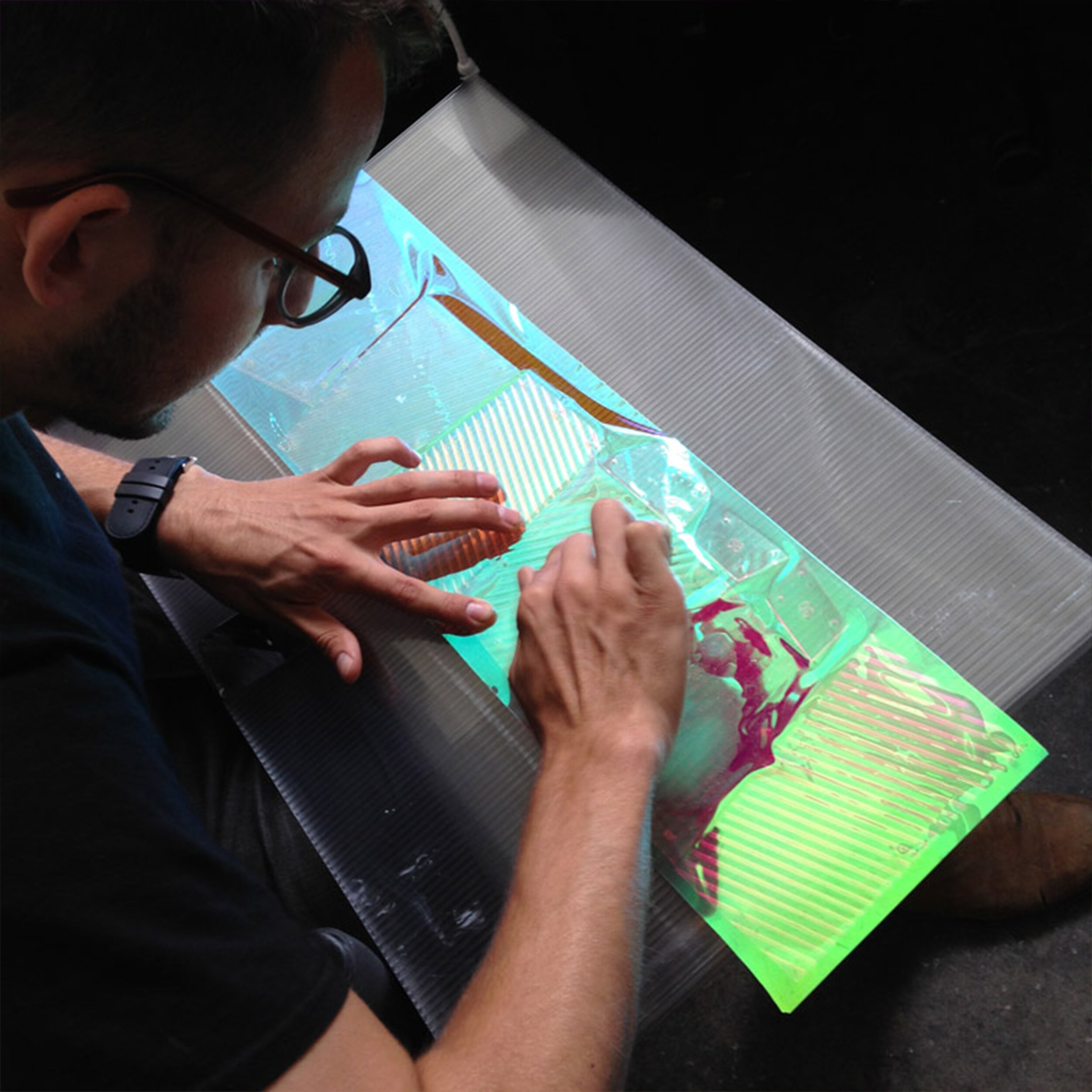
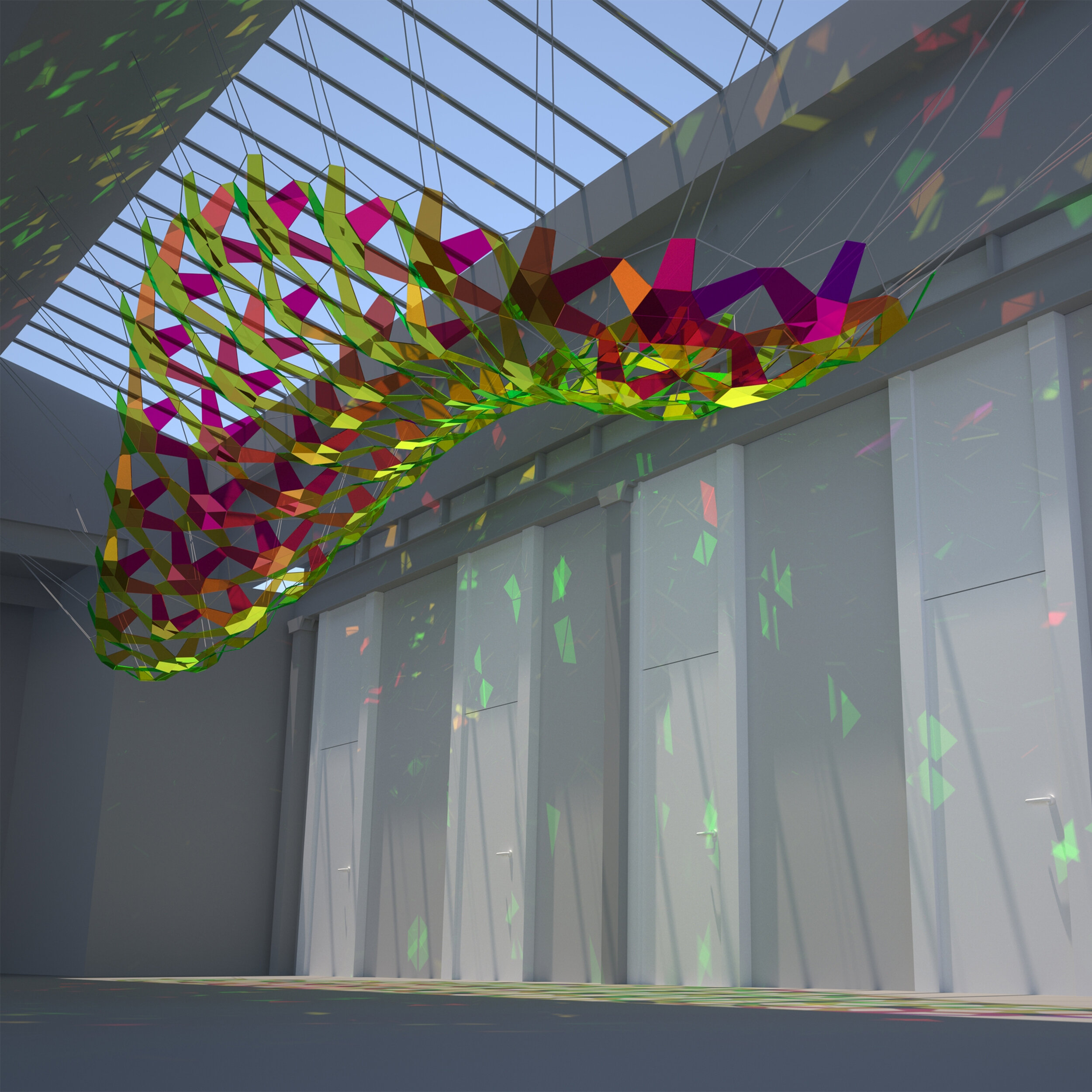
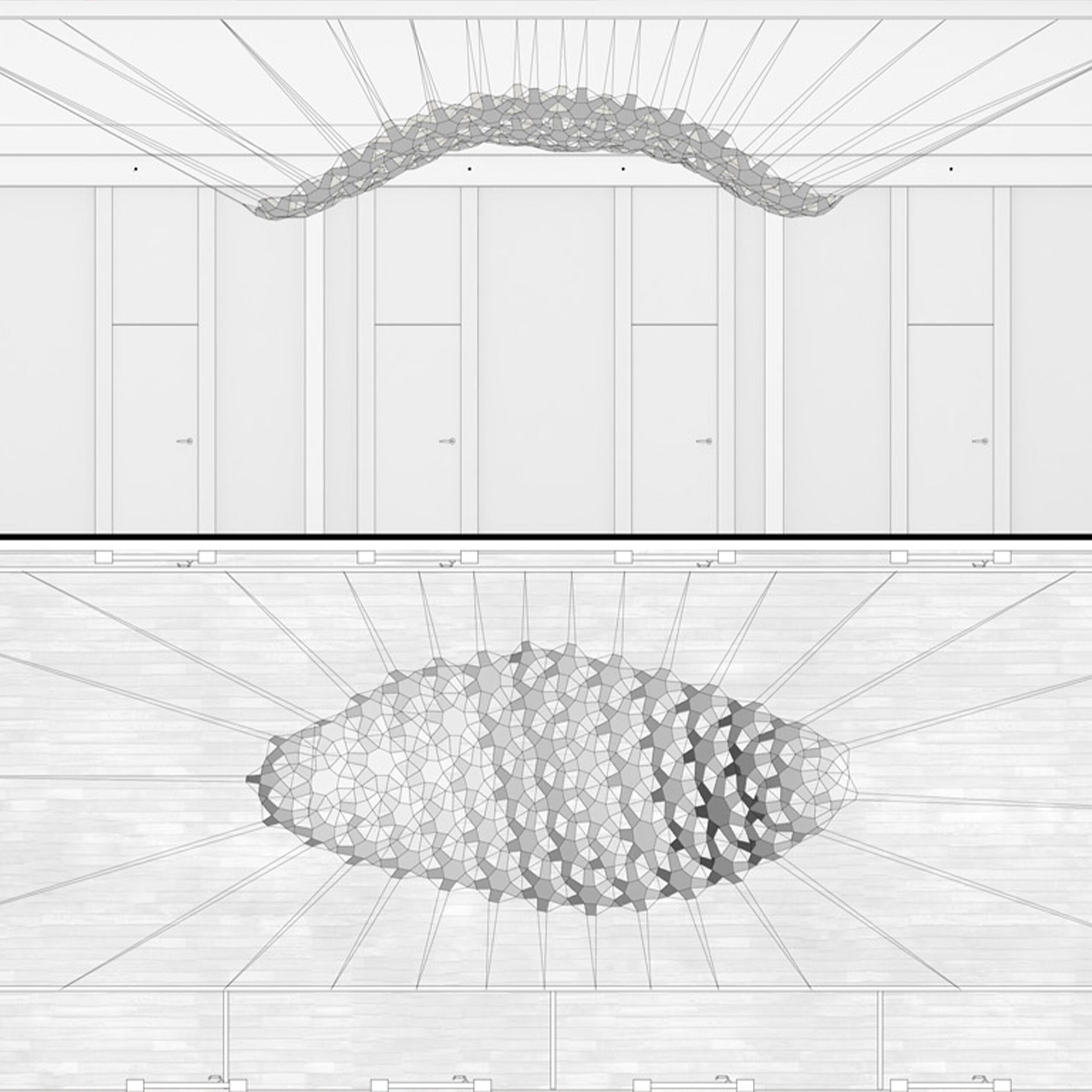

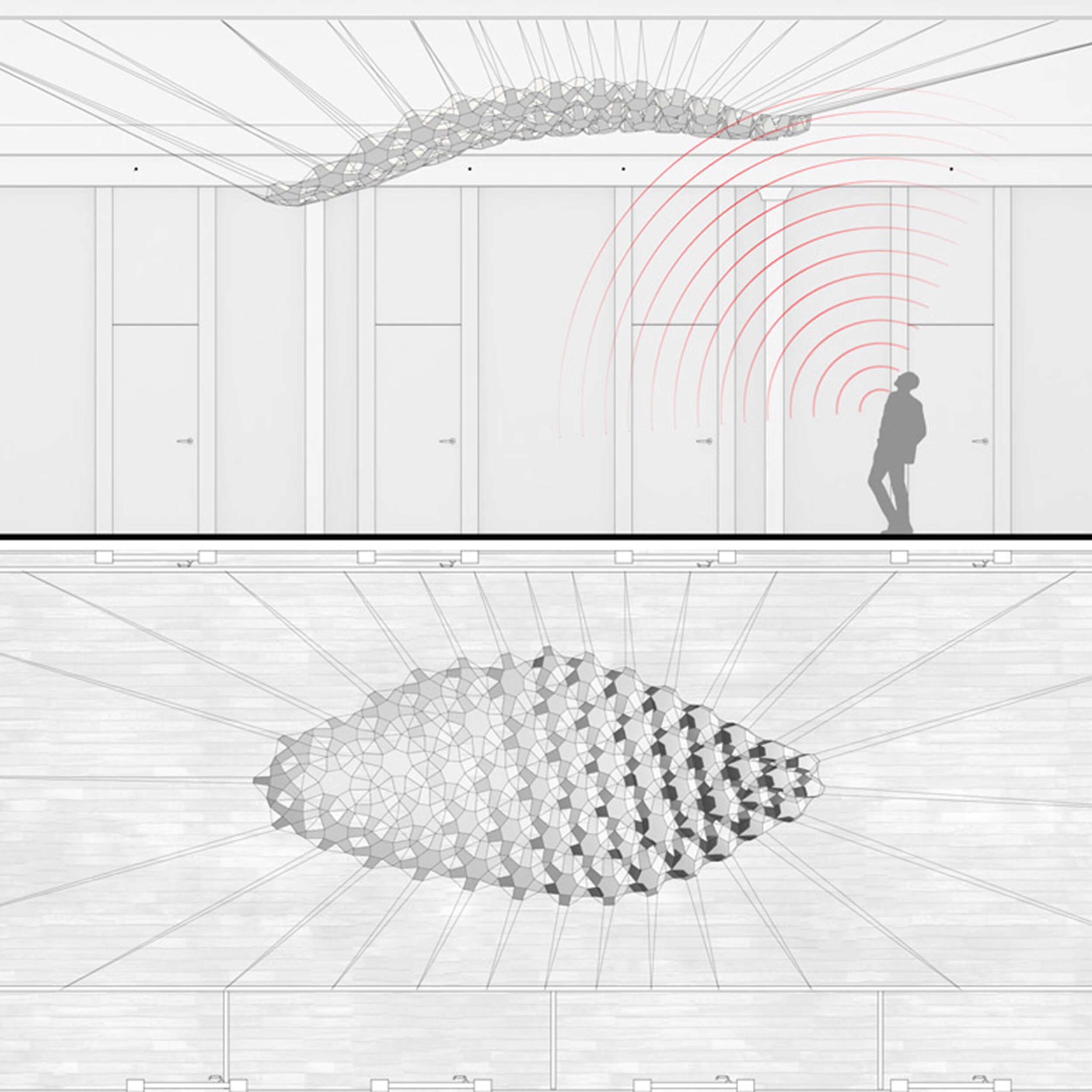
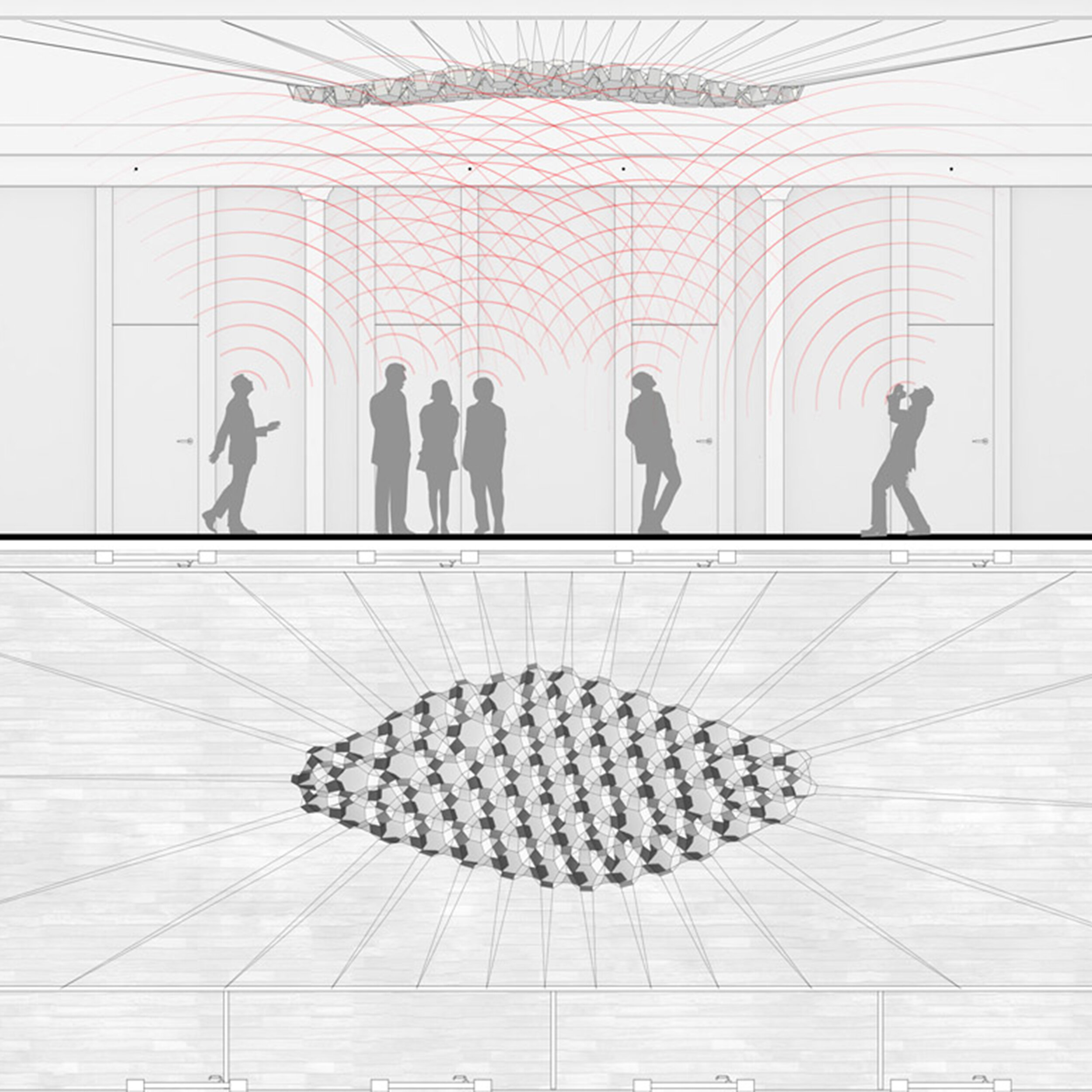
Abstract
As part of two NSF funded projects in the Jenny Sabin Lab at Cornell University, eSkin and KATS (Cutting and Pasting - Kirigami in Architecture, Technology, and Science), ColorFolds is one product of ongoing trans-disciplinary research spanning across the fields of cell biology, materials science, physics, electrical and systems engineering, and architecture. ColorFolds incorporates two parameters that the team is investigating: optical color and transparency change at the human scale based upon principles of structural color at a nano to micro scale. In addition to these material proprieties, ColorFolds features a lightweight, tessellated array of interactive components that fold and unfold in the presence or absence of people. ColorFolds follows the concept of "Interact Locally, Fold Globally," necessary for deployable and scalable architectures. Using mathematical modeling, architectural elements, design computation, and controlled elastic response, ColorFolds showcases new techniques, algorithms, and processes for the assembly of open, deployable structural elements and architectural surface assemblies. Each face of the tessellated and interactive components features a novel colorful film invented by 3M called Dichroic Film.
Not only does this film align with our investigations into structural color, but it also allows for room-scale investigations of these nano to micro material effects and features. An array of sensors detects the presence or absence of people below, which in turn actuates a network of Flexinol® by Dynalloy, Inc. spring systems that open or close the folded components. Comprised of a field of low cost sensors and passively responsive materials, ColorFolds is conceived to be generic and homogenously structured upon installation (i.e. laden with the full potential) but readily adaptable to local heterogeneous spatiotemporal conditions, thereby reducing the overall functioning demands upon it. This manner of operation not only maximizes immediate performative efficiency, but also allows for ongoing contextual adaptation. In this regard ColorFolds is a “learning” and adaptive skin assembly, a prototype for future applications in the context of adaptive architecture.
NSF EFRI ODISSEI: Cutting and Pasting - Kirigami in Architecture, Technology, and Science (KATS)
Kirigami from the Japanese kiru, “to cut,” offers a previously unattainable level of design, dynamics, and deployability to self -folding and -unfolding materials from the molecular to the architectural scale. To achieve this we will cut and join DNA-polymer hybrids to build on the nanoscale and, simultaneously, use three-dimensional printing and modeling to study and prototype geometries on the macroscopic scale. Jenny Sabin and Dan Luo, professor of biological and environmental engineering, are among the lead investigators on a research project to produce “buildable, bendable and biological materials” for a wide range of applications. Sabin and Luo shared a $2 million, four-year NSF grant with University of Pennsylvania researchers Randall Kamien, physics, and Shu Yang, materials science. The project is intended to bring new ideas, motifs, portability and design to the formation of intricate chemical, biological and architectural materials.
